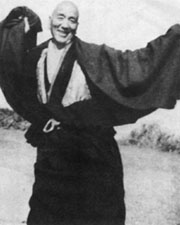The Nyingma tradition, the old Secret Tantra, classifies the Buddha's Dharm a into nine successive Vehicles, collectively contained in the Cause Vehicle and the Result Vehicle of Tantra. The Cause Vehicle has three divisions: the Hinayana Vehicle of the Sravakas, the Hinayana Vehicle of Pratyekabuddhas and the Mahayana Vehicle of the Bodhisattvas. In the Result Vehicle of Tantra there are two divisions: the three Outer Tantric Vehicles, and the three great methods of the Inner Tantric Class. All these have a great many definitions and explanations concerning their view, meditation, action and result, but it is not possible to write these explanations here. |
|||||
There are three lineages in the old translations of the Nyingma Tantras: the 'Distant Oral Lineage' (Tibetan: Ring.rGyud.bKah.ma Ð from the direct oral teachings of the Buddha); the 'Near Treasure Lineage' (Tib: Nye.rGud.gTer.ma - from teachings of discovered treasure texts, written and concealed in holy places by Guru Rinpoche, Khandro Yeshe Tsogyal and others, for the benefit of future generations), and the 'Lineage of Profound Pure Visions' (Tib: Zab.mo.dag.sNang - from teachings received by various Saints during visions in meditation and post-meditation). |
 |
||||
|
Sakya Pandita, the crowning ornament of all the Learned Ones of this earth, is famous for having defeated Trogje Gawo (the non-Buddhist Indian scholar) in debate. Except for this outstanding example, no other masters are known for having done likewise at that time. There are three traditions holding the lineage of Sakya Pandita: the Sakya, the Ngor and the Tshar. From the root of the Sakya tradition came the three renowned lineages of Bulug, Jonang and Bodong. From all these, a few minor differences in their views of the Sutras and Tantras have emerged from their explanations.
|
|||||
|
| Introduction
of Other Publications | Other
Buddhist Websites | Official
Publication | Colour
Photos |
| Activities Section
| Introduction of
Association | Items
for order | Forms
| Email Us | Home
|